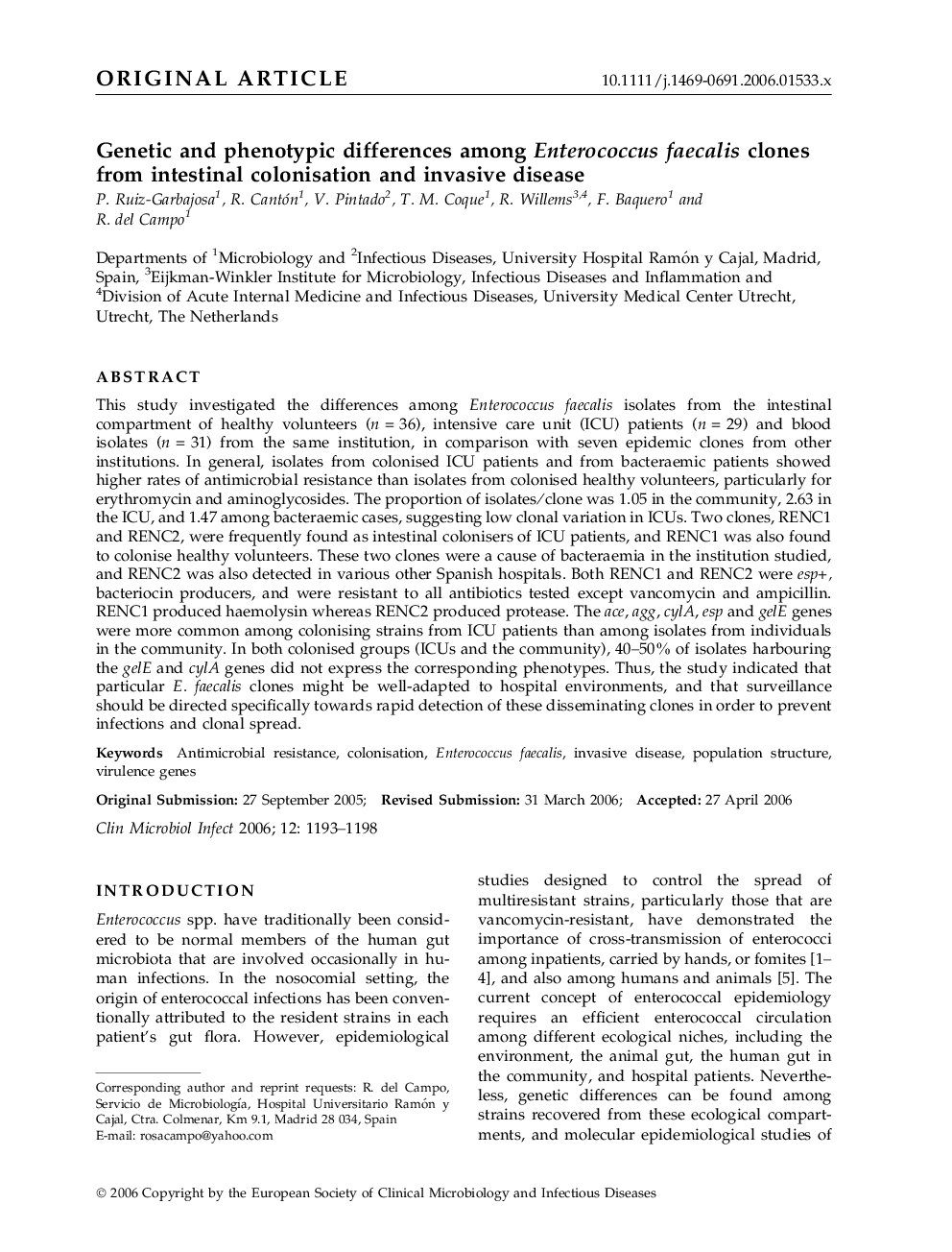| Article ID | Journal | Published Year | Pages | File Type |
|---|---|---|---|---|
| 3398305 | Clinical Microbiology and Infection | 2006 | 6 Pages |
ABSTRACTThis study investigated the differences among Enterococcus faecalis isolates from the intestinal compartment of healthy volunteers (n = 36), intensive care unit (ICU) patients (n = 29) and blood isolates (n = 31) from the same institution, in comparison with seven epidemic clones from other institutions. In general, isolates from colonised ICU patients and from bacteraemic patients showed higher rates of antimicrobial resistance than isolates from colonised healthy volunteers, particularly for erythromycin and aminoglycosides. The proportion of isolates/clone was 1.05 in the community, 2.63 in the ICU, and 1.47 among bacteraemic cases, suggesting low clonal variation in ICUs. Two clones, RENC1 and RENC2, were frequently found as intestinal colonisers of ICU patients, and RENC1 was also found to colonise healthy volunteers. These two clones were a cause of bacteraemia in the institution studied, and RENC2 was also detected in various other Spanish hospitals. Both RENC1 and RENC2 were esp+, bacteriocin producers, and were resistant to all antibiotics tested except vancomycin and ampicillin. RENC1 produced haemolysin whereas RENC2 produced protease. The ace, agg, cylA, esp and gelE genes were more common among colonising strains from ICU patients than among isolates from individuals in the community. In both colonised groups (ICUs and the community), 40–50% of isolates harbouring the gelE and cylA genes did not express the corresponding phenotypes. Thus, the study indicated that particular E. faecalis clones might be well-adapted to hospital environments, and that surveillance should be directed specifically towards rapid detection of these disseminating clones in order to prevent infections and clonal spread.
